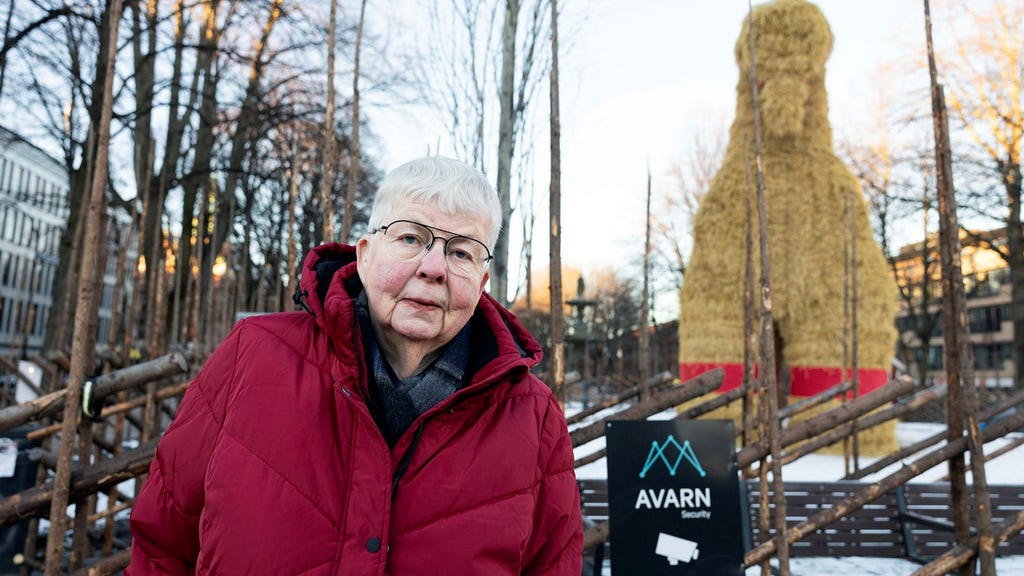The Gävle Goat, a giant Yule Goat constructed of straw, is a Christmas tradition in Gävle, Sweden. Its existence, however, is often precarious, as it has become infamous for being a frequent target of arson. This duality – tradition versus notoriety – sparks a generational divide within the community, creating a complex relationship between the citizens and their flammable landmark.
Older residents, like Lis-Kersti Sterler, a long-time Gävle inhabitant, express a strong desire for the goat to remain untouched throughout the Christmas season. For them, the goat symbolizes holiday cheer and community spirit, and its burning represents a senseless act of vandalism. They question the motivations of the arsonists, suspecting barroom bets and a general disregard for tradition. While they acknowledge the goat’s unusual fame, stemming largely from its fiery demise, they prioritize its symbolic value over its international notoriety. They believe the goat’s beauty and what it represents should be the focus, not its potential destruction.
Younger residents, however, often hold a different perspective. Isabel Montonen, a 26-year-old Gävle resident, suggests that many of her peers find the burning of the goat to be amusing and even a point of pride. The international media attention the burning attracts brings a certain notoriety to Gävle, a somewhat perverse form of publicity that some find entertaining. She acknowledges the generational gap in perspectives, noting that older residents are more attached to the tradition of preserving the goat, but points out the goat’s history of arson, suggesting its vulnerability is almost ingrained in its story. This perspective highlights the complicated nature of the goat’s existence, where destruction is as much a part of its narrative as its construction.
This generational divide doesn’t rigidly define everyone’s opinion. Per-Ove Larsson, 75, while expressing a preference for the goat to remain standing, admits the arson attempts contribute to its fame. He laments the goat’s current location, suggesting a more prominent position in the city would further enhance its presence and symbolic importance, regardless of its fate. His view reveals a nuanced perspective, recognizing the interwoven nature of tradition, notoriety, and even urban planning in the goat’s story. He sees a missed opportunity to fully celebrate the goat, burned or not, by failing to showcase it in a more prominent location.
Adding to the complexity of the issue are those younger residents who defy the generational trend. Hermon Rusom, also 26, hopes the goat remains unharmed. He appreciates the goat as a symbol of Gävle and values the annual tradition. This demonstrates that while a generational divide exists, it is not absolute. Individual appreciation for the goat transcends age, and the desire to see it survive the holiday season is present across different demographics.
The ongoing debate over the Gävle Goat’s fate reflects a broader conversation about tradition, vandalism, and the unexpected ways symbols can evolve. The goat’s precarious existence has transformed it into more than a holiday decoration. It has become a symbol of Gävle itself, embodying both the community’s traditions and its somewhat reluctant acceptance of its fiery infamy. The burning of the goat, while lamented by many, ironically fuels the very fame it detracts from, creating a complex and paradoxical cycle of destruction and renown. This tension between preservation and destruction, between local tradition and global notoriety, makes the Gävle Goat a unique and compelling phenomenon, sparking conversation and debate year after year. The goat’s story is not just about a straw effigy; it is a reflection of the changing dynamics of a community grappling with its evolving identity in the global spotlight.














